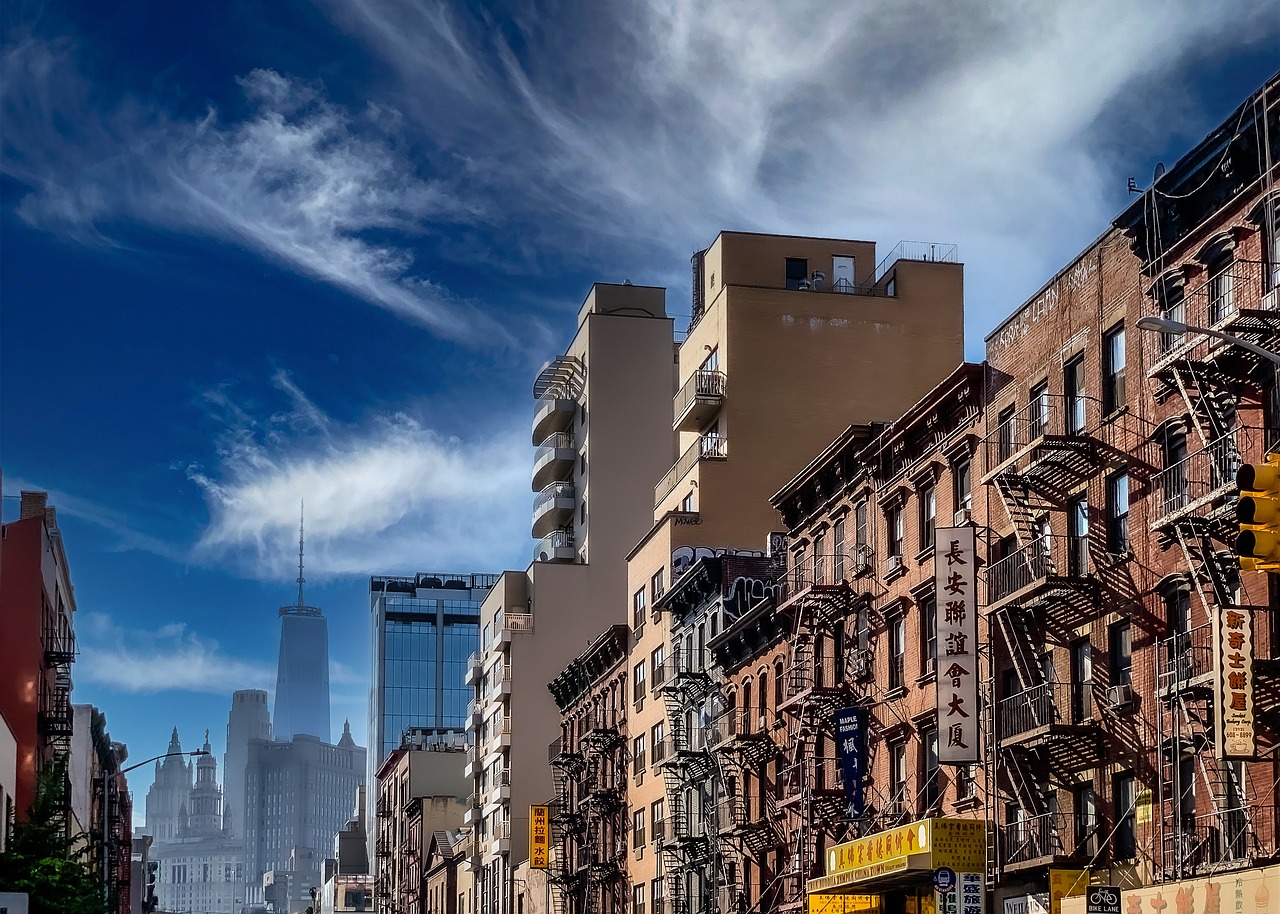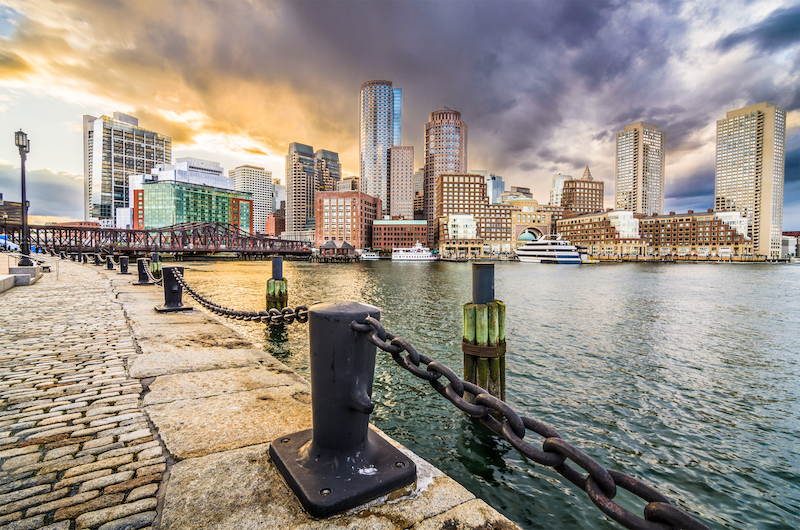
***UPDATED*** This market report has been updated, check out our 2023 Boston Apartment Rental Market Report!
Last year marked one of the most turbulent years on record for the local Boston apartment rental market. It saw a pandemic reshape the local multi-family and residential housing market. In February of last year, we predicted another banner year for the Boston rental market amid record low vacancies and record high rent prices. In a mercurial twist of fate, we intimated that ‘short of a cataclysmic event hitting Boston’, our great city would be facing intense legislative pressure for both price controls and delivery of significantly more housing. Four weeks later we were going into lockdown with more questions than answers.
We are now witnessing what happens when an unstoppable force hits an immovable object. Disruption occurs when a pandemic slams into one of the hottest real estate markets on the planet. Now that we have the data, it’s time to analyze the mayhem of 2020, and even take a crack at predicting what will happen in 2021. Full disclaimer here, this is our least confident prediction ever.
Let’s start with the elephant in the room: the apartment vacancy rate in Greater Boston. At present we’re seeing a Real Time Vacancy Rate (RTVR) of 5.44%, which marks a 413.21% increase in the city of Boston from exactly one year ago. Meanwhile, in the suburbs, the current RTVR of 4.21% marks a 259.83% increase since March of 2020.
| Area | 2021 Vacancy Rate | 2020 Vacancy Rate | % Change |
|---|---|---|---|
| City of Boston | 5.44% | 1.06% | +413.21% |
| Boston Suburbs | 4.21% | 1.17% | +259.83% |
Before we take a deep dive into our neighborhood housing data for Boston apartments, it’s necessary to understand the bigger picture. We must examine the local Boston financial ecosystem and demand drivers of rentals and sales pricing. There are numerous factors to consider, but when you boil it all down, there are four key components influencing the outcome of 2021.
4 Important Factors Influencing the Apartment Rental Market in Boston in 2021
- 1. COVID-19 – Starting with the obvious, the slower than anticipated delivery of the vaccine has left many property owners guessing when/if they should renew leases, at what price points, and how long many units will sit vacant. Boston may run on Dunkin’, but our apartment rental market operates on the heavily weighted lease renewal date of 9/01/2021.
- 2. Remote Learning – When will students return to Boston? Universities providing transparency and guidance for their fall 2021 plans is crucial to thousands of property owners in Boston. The longer they wait to announce plans the greater the disruption to the stability of our apartment pricing models. Remote learning has also put a dent in the local student population, causing massive increases of inventory in Fenway, Allston, and Symphony.
- 3. Population Dispersion – When will our professionals come back to the city? Neighborhoods close to Downtown are seeing vacancy rates hovering around 20% as demand has shifted away from the densely populated city center. Millennials fled and bought homes in droves outside of our beloved Boston. Median Home prices are up 11.4% year-over-year in Massachusetts. You heard that right. Despite a global pandemic and a decline in state population for the first time since 2005, Massachusetts median home price increased to $445,500 in 2020, up from around $400,000 a year ago.
- 4. VC Funding – When will the Boston hiring spree begin again? VC Funding increased by a whopping 48% last year in Boston. Boston remains to be one of the most attractive markets for VC funding, with Boston and Cambridge based companies raising $16.8 billion dollars according to Pitchbook’s 2020 Venture Monitor. That 48% increase year-over-year is the largest increase in total VC funding of any metro in the US in the report. This suggests that Greater Boston will see even more economic opportunity and job creation in short order.
Folded into all of these forces are subplots that are storylines on their own, such as the current unemployment rate of 7.4%, up from 2.8% about one year ago and down from 17% in May 2020. Last year marked the first time since 2005 that the population of Massachusetts decreased, albeit by only .02% according to Macrotrends.
Regardless, home prices saw a big surge in the closing months of 2020, getting propped up by low inventory and a growing demand for single-family homes amid record low interest rates. It goes to show that despite the challenges we’ve faced, things aren’t all that bad when you look at the broader perspective of the local Boston real estate market.
In terms of the apartment rental market specifically, there are new unexpected driving forces of remote-learning and remote work causing disruption in 2021. Last year we reported that the local rental market was so dependent on the student population that roughly 60% of apartment leases in Boston begin or end on September 1. This year we learned what happens when a large percentage of those students don’t come back to Boston in September for Fall semester.
So now with a better understanding of the variables at play, let’s dive into the data.
Apartment Inventory and Vacancy Rates in Greater Boston
Boston Pads’ total non-luxury apartment inventory in Greater Boston increased to 75,596 units in 2021, up 5.32% since March of last year. There are currently 7,677 apartments available for rent in Greater Boston, compared to just 2,946 available exactly a year ago. Of those available apartments, 3,729 of them are currently vacant, compared to a paltry 794 in March of 2020.
| TOTAL APARTMENT INVENTORY | TOTAL AVAILABLE APARTMENTS | TOTAL VACANT APARTMENTS |
|---|---|---|
| GREATER BOSTON | GREATER BOSTON | GREATER BOSTON |
| 75,596 | 7,677 | 3,729 |
| +5.32% | +160.59% | +369.65% |
That leaves us with a Real-Time Availability Rate (RTAR) of 10.16% (+147.80% YOY) and a Real-Time Vacancy Rate (RTVR) of 4.93% (+344.14% YOY) for the Greater Boston Metro area. The RTVR peaked at over 9% in September 2020, which surpassed the cyclical high of 2019 by over 4X. While these numbers are shocking and certainly out of the norm, the effects have not been equally felt across Greater Boston.
Boston Neighborhoods With the Biggest YOY Vacancy Rate Increases
When you look at the list of top 10 neighborhoods with the highest year-over-year vacancy rate increases, a few things jump out at you. First, Downtown Boston and neighborhoods nearby are definitely seeing the biggest jump in vacancies, as they should considering the correlation between population density and COVID risk. Second, those that aren’t near downtown all have one thing in common. They are all in proximity to some of the area’s largest Universities. The data clearly reveals what we felt intuitively but couldn’t describe without actual numbers.
| Area | 2021 Vacancy Rate | 2020 Vacancy Rate | % Change |
|---|---|---|---|
| Downtown Boston | 24.78% | 0.86% | +2,781.40% |
| Fenway | 11.17% | 0.60% | +1,761.67% |
| Bay Village | 6.54% | 0.41% | +1,495.12% |
| Allston | 7.57% | 0.84% | +801.19% |
| Symphony | 5.91% | 0.88% | +571.59% |
| Back Bay | 4.99% | 0.77% | +548.05% |
| Jamaica Plain | 4.17% | 0.70% | +495.71% |
| Brighton | 4.45% | 0.75% | +493.33% |
| West Roxbury | 2.98% | 0.52% | +473.08% |
| North End | 8.95% | 1.92% | +366.15% |
What’s also interesting is that all of these areas were well below the City of Boston’s vacancy rate of 1.05% exactly a year ago, with the exception of North End. Historically these neighborhoods have always seen strong demand on account of their location, even though turnover is high in the neighborhoods close to Universities like Allston, Mission Hill, Symphony and Fenway. Never mistake high turnover as a problem as long as high demand exists. In certain neighborhoods, Boston’s apartment market operates like a high performance car, but one that requires frequent pit stops for maintenance. However, when something moving at such a high velocity gets disrupted, such as our red hot multi-family apartment market, it will quickly unravel.
The wheels flew off our Boston apartment leasing vehicle over the past 12 months. Residential apartments in Boston with close proximity to Colleges previously enjoyed an endless flow of new students and supporting faculty and staff. The September 1 leasing cycle has been occurring for decades. Many landlords are now in the vacant overhaul period where they are revamping and retooling their product to compete with better renovated or new housing stock in Boston.
The neighborhoods close to Downtown that were the often sought after by renters over the past decade have temporarily become the least desirable. As the population has shifted away from Downtown, so too have the numbers, and now the neighborhoods with the lowest vacancy rates are the areas you would have least expected a year ago. Downtown apartments often operate to the syncopated beat of planes and trains. Numerous Downtown Boston apartments cater to people coming here for shorter periods of time. There was an entire cottage industry built on temporary assignments of work, schooling, and medical stays. That sector of the Boston real estate market is going to take some time to sort itself out and recalibrate.
Boston Neighborhoods With the Lowest Vacancy Rates
| Area | 2021 Vacancy Rate | 2020 Vacancy Rate | % Change |
|---|---|---|---|
| Roslindale | 1.68% | 1.29% | +30.23% |
| Hyde Park | 1.69% | 0.70% | +141.43% |
| South Boston | 2.18% | 0.88% | +147.73% |
| West Roxbury | 2.98% | 0.52% | +473.08% |
| South End | 3.27% | 1.31% | +149.62% |
| East Boston | 3.33% | 1.07% | +211.21% |
| Fort Hill | 3.56% | 1.66% | +114.46% |
| Roxbury | 3.73% | 3.44% | +8.43% |
| Mission Hill | 3.90% | 0.95% | +310.53% |
| Jamaica Plain | 4.17% | 0.70% | +495.71% |
Looking over the areas with the lowest vacancy rates, one thing becomes imminently clear. The neighborhoods on the outskirts of the City aren’t nearly as affected by vacancies as those near Downtown Boston. It reflects a trend we’ve been seeing in many of the nation’s most densely populated metros. The perceived financial and health risks associated with coronavirus was enough to cause many to move away from the city. Combine that with the record low interest rates of 2020, many residents saw it as a great opportunity to flee apartment life downtown and buy properties in the suburbs.
The broader question will be as to whether or not they will continue to do so when the pandemic wanes. Will a return to increased traffic on the road and longer commutes to the city be a catalyst to sell the suburban house in 2022? Or is it possible that employers will simply accept that remote work is the wave of the future and to embrace less people in the office. Time, traffic patterns and preferences should start to reveal themselves by the end 2021.
What Can We Learn From The Current Boston Apartment Availability Rate
The Real Time Availability Rate (RTAR) is separate metric from the Real Time Vacancy Rate (RTVR). The RTAR measures the percentage of apartments that are not only vacant, but also those that are available for rent in the future but currently occupied. Knowing how to read the RTAR is akin to having a crystal ball to purview the future apartment leasing season in Boston. You can start making mathematical formulas to calculate apartment pricing, what housing stock is at risk of going vacant, and potential days on market.
| Area | 2021 Availability Rate | 2020 Availability Rate | % Change |
|---|---|---|---|
| City of Boston | 12.38% | 4.92% | +151.63% |
The RTAR and its relation to the RTVR can help us understand how future inventory is being absorbed in the current market and what types of apartments are being left behind sitting vacant. They can help us forecast overall price points as we near the pivotal 9/1 leasing date in Boston. As we reach closer to September, the data delivers new outcomes and strategies, and as we reach mid-June, leasing patterns accelerate and compress from monthly pricing strategies to bi-monthly to even weekly.
Below we can see what happens in a normal apartment leasing season for the RTAR. It typically peaks around April as property managers and Landlords get solid information back from tenants on their decision to either renew their leases or vacate. Most of the activity will be centered around the 9/1 to 8/31 one-year standard fixed term Greater Boston apartment leasing cycle. Historically RTAR bottoms out around 9/1 because there isn’t a landlord or apartment operator in Boston that wants a vacant unit going into the fall. Essentially from the landlord’s perspective, it’s avoid a vacant unit at all costs, but that is especially true going into the fall in Boston.
2019 City of Boston Real-Time Availability Rate – A Normal Year
2019 availability rate historical chart
Going into March of 2021, it appears we have a massive amount of hangover vacant units that is skewing the RTAR. This situation is pushing landlords to consider non-traditonal occupancy dates such as: 4/1 – 5/1 – 6/1 – 7/1 – 8/1. You are witnessing leases that are changing based on the combined influences of a higher than normal RTVR stacking on top of the RTAR. The confluence of flexible lease-up dates and when leases actually end is a quagmire that requires a steady hand and knowing your inventory, and more importantly, how your apartments stack up against the competition.
2020 City of Boston Real-Time Availability Rate – Not So Normal
2020 availability rate historical chart
It is fitting that in 2020, the year of COVID, the RTAR hit its apex of 9.51% in September, which is usually the month that RTAR bottoms out between 1-3% under normal conditions. Considering that currently the RTAR is sitting at 12.5% and continuing to climb, there is a strong mathematically probability that we break 17% in 2021.
There is no question that apartment leasing in Boston has shifted in favor of renters. In recent years, landlords have been able to keep their units filled regardless of condition due to the overwhelming demand for housing in many neighborhoods. Now with more options, renters are gravitating towards renovated or newer inventory as it becomes available rather than outdated or poorly kept apartments. What’s interesting is the higher number of apartments sitting vacant regardless of price reductions and incentives. The condition of an apartment seems to matter more than expected, rather than just pricing incentives. In countless reviews of vacant apartments, we have seen that a poorly kept apartment even $200 to $400 less per month than real time average rent price often struggles to get rented. We have noticed that when a landlord puts in some modest work coupled with a smaller price reduction or incentive, the unit will rent.
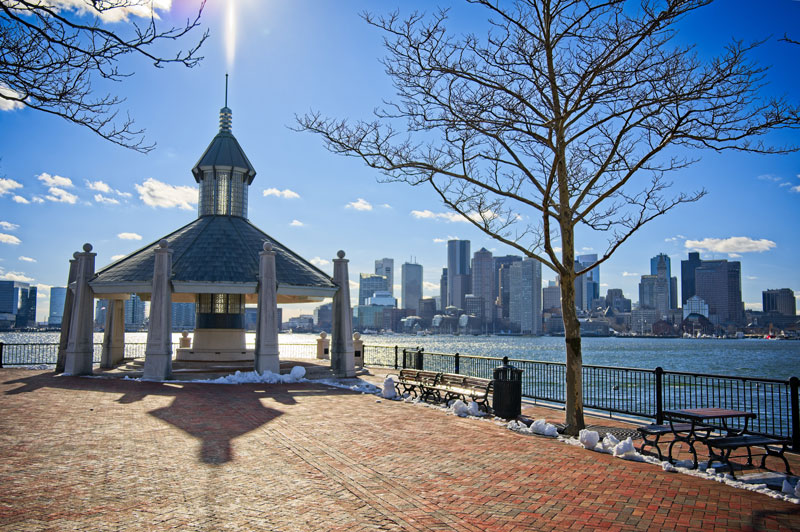
Recently landlords are utilizing vacant apartment downtime to do renovations on their outdated apartment inventory to make them more competitive. With the picture and video quality of today’s mobile phones there are few details not exposed in our instant-on media libraries of housing stock. It often makes sense to have an objective outside third party walk through your inventory. It’s important to get candid opinions on what to improve in your unit to fill vacancies.
It’s common to run into property owners that renovated their places 10-20 years ago but still feel it was a recent refresh. If your apartments are not renting, you have to focus on the “why.” When an apartment leasing agent tells you they have shown your apartment 20 times, that could be a signal it’s time to think about other solutions. Boston apartments are getting better in appearance and quality the longer the RTVR stays at a high level. This spells a big win for renters in Boston over the next several months. Not only will they have a larger quantity of apartments to pick from, they will also have a bigger pool of quality apartments to decide which one works best for their needs. And the kicker is they’ll likely spend less than they did in previous years.
Average Rent Prices in Boston
So with all this added apartment supply, one would assume that the average rent price in Boston would have plummeted. Well for the most part the prices haven’t dropped as significantly as some faceless national internet portals have claimed. In fact, with the exception of the neighborhoods that are seeing the highest vacancy rates, rent prices have remained mostly flat throughout the past 12 months. They’ve even gone up in a few of the neighborhoods further from Downtown. Where the true value is for the renter is the reduction in move-in costs and property owners paying the broker’s commissions. We will cover the highlights in move-in reductions in a separate article.
In terms of year-over-year change in average rent for Boston as a whole, prices for smaller apartments fell much more than larger sized units. The average rent price for a studio apartment in Boston dropped 5.44% since February of last year, and the average rent price for a 1 bedroom is down 5.58%. The 2 bedroom price fell by 2.35%, while 3 bedrooms only dropped .72%.
City of Boston Monthly Average Rent Price by Unit – 1/2019 – 3/2021
Boston apartments rent prices historical chart
You could certainly say that the broker’s commission of one month’s rent that many landlords are now paying will reduce the landlords Net Operating Income (NOI) by 8.3%. You would also be accurate in taking off another 8.3% when a landlord offers a free months rent on a vacant unit. There are lots of incentives that quickly chip away at real NOI for landlords. We have witnessed a few Boston landlords even offering 3 months free on a one year lease and we have seen 5 months free on a two year lease. At the present moment, 53% of landlords are paying the full broker fee while another 14% are paying some portion of it. Under normal market conditions, less than 5% of landlords will pay the owner commission.
Clearly, those types of big incentives take specific units and buildings into the range of a 20% reduction or greater. However, when you base the RTVR at single digits against a greater than 90% occupancy rate, you are not going to swing the aggregate pricing data needle down too much. Keep in mind these are very real but acute short-term pains for landlords. With warmer weather coming and vaccines getting greater dispersion going into the springtime, these incredible incentives will probably not last.
| AVG RENT PRICE STUDIO | AVG RENT PRICE 1BR | AVG RENT PRICE 2BR | AVG RENT PRICE 3BR | AVG RENT PRICE 4BR |
|---|---|---|---|---|
| CITY OF BOSTON | CITY OF BOSTON | CITY OF BOSTON | CITY OF BOSTON | CITY OF BOSTON |
| $1,714 | $2,041 | $2,520 | $3,045 | $3,654 |
| -5.88% | -6.72% | -3.11% | -1.10% | -1.91% |
So why are smaller units experiencing more significant price reductions than larger 3 and 4 bedroom apartments? The answer lies in the neighborhood data and the size of the buildings. If we look at the areas with the largest year-over-year drops in Average Rent, the answer is clear. Those once popular neighborhoods close to Downtown have greater vacancies and landlords are scrambling to fill units.
Ironically, bigger bedroom apartments are predominantly found in smaller buildings. Triple deckers and two-family properties didn’t take as bad a hit as bigger apartment buildings in terms of vacancies. Smaller multi-family properties have fewer common areas and hardly any have elevators. Boston renters had their own opinions of what defines common areas and where they could potential come in contact with other people. There was also the affordability factor to consider. Bigger bedroom apartments in Boston save people more money, and in a recession every dollar counts.
Boston Neighborhoods with the Largest Decrease in YOY Average Rent in 2021
| Neighborhood | Studio Avg. Rent YOY % Change | 1 BR Avg. Rent YOY % Change | 2 BR Avg. Rent YOY % Change | 3 BR Avg. Rent YOY % Change | 4 BR Avg. Rent YOY % Change | Average YOY % Change |
|---|---|---|---|---|---|---|
| Bay Village | -33.30% | -5.02% | -18.47% | -4.51% | N/A | -15.32 |
| Beacon Hill | -6.48% | -10.73% | -2.67% | -15.45% | -23.91% | -11.85% |
| Seaport | -12.29% | -4.54% | +11.71% | -33.37% | N/A | -9.62% |
| Downtown | -17.40% | -19.02% | -21.91% | +19.89% | N/A | -9.61% |
| Back Bay | -9.18% | -11.29% | -8.71% | -4.57% | N/A | -8.44% |
| South End | -11.71% | -11.78% | -7.68% | -4.30% | -3.90% | -7.87% |
| Fenway | -6.19% | -9.23% | -6.92% | -7.68% | -8.44% | -7.69% |
| North End | -10.78% | -5.28% | -5.03% | -9.99% | -6.54% | -7.52% |
Most of the hardest hit Boston neighborhoods have a very large inventory of smaller bedroom units (studios, one bedroom, two bedroom) given that the population density is so high in these areas. You’ll find very few 3 & 4 bedroom apartments in places like Downtown, North End, Back Bay, and Beacon Hill. So as prices dropped on small units in these areas, it brought down Boston’s overall average rent price for Studios and 1 Bedrooms. You also have to keep in mind that a vast amount of corporate short-term furnished apartment rentals as well as Airbnb’s were highly concentrated near the core financial and medical areas. This exacerbated the decline in pricing as those units worked their way back into the vacant long-term unfurnished pool of apartments.
So while several neighborhoods are facing large RTVR’s, others are carrying on like it’s business as usual. Glance at the 10 neighborhoods that had the biggest gains in average rent over the past year, it’s like deja vu all over again. Those same neighborhoods experiencing the lowest vacancy rates are staying flat and even gaining in terms of average rent prices. The only real difference we have seen in some neighborhoods is that landlords in Boston are now open to paying the broker’s commission on apartments even as far out as a September 1st Rental. We are now seeing property managers in Boston willing to make deals work by extending the length of time it takes to gather last month’s rent and security deposits or reducing one or the other. There is a lot of “noise” in the math and data equations.
Boston Neighborhoods with the Smallest Decrease (or Largest Increase) in YOY Average Rent in 2021
| Neighborhood | Studio Avg. Rent YOY % Change | 1 BR Avg. Rent YOY % Change | 2 BR Avg. Rent YOY % Change | 3 BR Avg. Rent YOY % Change | 4 BR Avg. Rent YOY % Change | Average YOY % Change |
|---|---|---|---|---|---|---|
| Mattapan | N/A | N/A | +2.97% | +6.17% | +12.83% | +7.32% |
| Roslindale | N/A | N/A | -0.83% | +6.49% | +6.07% | +3.91% |
| Hyde Park | N/A | +7.41% | +0.52% | -0.96% | -1.83% | +1.29% |
| Fort Hill | N/A | +2.74% | +4.03% | -0.24% | -2.86% | +0.91% |
| Roxbury | -8.12% | +4.14% | -4.16% | +2.27% | +4.38% | -0.30% |
| Mission Hill | -9.83% | +1.53% | -0.04% | +1.36% | +2.46% | -0.90% |
| Brighton | -1.16% | -4.95% | -1.85% | -2.37% | -3.31% | -2.73% |
| West Roxbury | +0.60% | +0.44% | -5.57% | -9.06% | -1.20% | -2.96% |
| South Boston | -11.59% | -4.93% | -3.13% | -2.55% | -2.53% | -3.39% |
| Allston | -3.25% | -4.23% | -4.41% | -2.54% | -1.20% | -2.96% |
There have been internet postings of rents down from 7% – 20% in Boston. What we haven’t seen is the aggregate mathematical formula proving out these statements. How did they draw their hypothesis? What data sets are they utilizing to make these assumptions? How many landlords do they have in their database? Are they only using data from luxury buildings? Could it be possible they are only using the listed apartment price rather than the actual rented price?
It is fair to say that a few neighborhoods have experienced 20 percent reductions in rent on vacant units but that is more the exception than the norm. It is true that rent prices are down as much as 20% for smaller units near Downtown and down 10% in those neighborhoods closest to local Universities.
This offers up a silver lining to the dark and cloudy state of the Boston apartment rental market. Sure we’ve faced some hardships, but they are isolated to a few neighborhoods for the most part. Besides the vacancy issues caused by COVID-19, there were no other socio-economic factors at play. If we can assume that COVID is a temporary burden, then we can predict that the market will make a full recovery over the next two years.
Predicting the Course of the 2021 Boston Apartment Rental Market
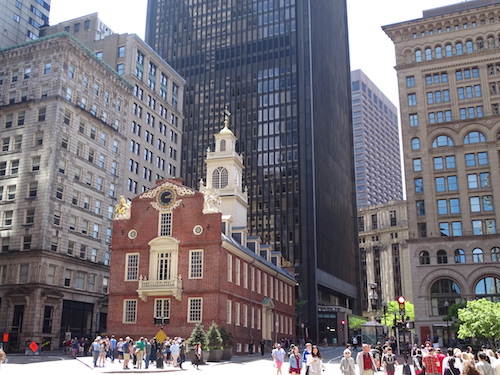
We’ve been doing these real estate predictions for 5 years. The first 4 years, our forecasts met expectations based on normal data driven outcomes. For the most part, we would highlight all of the previous year’s news of regional economic growth and prosperity. We would go over the record low vacancy rates and the steadily climbing rent and real estate prices. We’d usually wrap it up by refuting those naysayers warning about a bubble and predict that Boston would once again rise to prominence in all her glory. Success was predictable.
This year it’s not so easy. So much rides on a resolving the pandemic in order for the market to return to normal. A swift and effective rollout of a vaccine could revive the population in our Downtown areas and fill our Universities and the surrounding neighborhoods within 6 months. This would effectively alleviate much of the inventory problems plaguing those communities.
Of course we all want to believe that is going to happen in 2021, but if last year taught us anything, it’s to assume nothing. That being said, with or without COVID-19 going away, Boston’s rental market is going to hold its own. We are a tech based, swift moving group of hardy New Englanders and sitting still isn’t something we like to do. Most landlords in Boston are busier than ever shifting some of their focus to updating and improving housing quality. Some landlords are moving towards renovating and selling their units through value add. The drum beat and tempo shifts quickly. This is a temporary pivot, an apartment renovation reset that will play out this year– week by week. Real Estate decisions are going to be made fast and adjustments of prices and strategies will turn on a dime. There will be winners and losers, but that’s just what it is right now. That is the free market.
If you’ve been following us, you’d know we’re perennially bullish on the Boston housing market and for good reason. Outside of the booming housing economy the region has experienced over the past decade, the Boston Metro area has reshaped itself into one of great places to live through a combination of tech, finance and medical industries. Boston always figures out a way to win. Success is a habit.
So before you write us off as crazy for having a slightly positive outlook, here are 3 reasons Boston’s apartment rental market will recover by the end of 2021 regardless of COVID-19.
1. Boston’s Real Estate Market Is Still Roaring
Despite the challenges presented by COVID, the overall housing economy in the Greater Boston notched another banner year in 2020, with median home prices increasing 12% since December 2019. In addition to that, NAR reports that total housing inventory for sale is down 23% year-over-year, and unsold inventory sits at an all time low of 1.9 months supply, down from a 3 month supply in December of 2019. This suggests that prices will continue to rise in 2021 amidst a shortage of houses for sale in Boston. It is a sellers market now more than ever. Yup, you read that correctly.
2. The Metro Region is Still Growing
The population of Massachusetts did see its first decline in population since 2005 last year as previously mentioned, marking a -0.02% decrease in 2020. Despite the net loss of people statewide, the City of Boston actually saw an increase in population by 0.05% according to Macrotrends.
Boston has not lost its appeal to Millennials, as the 20-40 age demographic remains the fastest growing in Boston and the largest by percentage share (42%). This supports the idea that the apartment inventory issues we’re seeing in some neighborhoods in Boston is more related to COVID than any actual housing market conditions. We will begin our apartment leasing recovery shortly. The RTAR is going for a wild ride this year but things are going to bounce back quickly.
3. Opportunity Loves Boston – VC Funding Increased 48% for Our Metro Area in 2020
Boston has cemented itself as one of the tech capitals of the US, with the Metro area attracting over $16.8B in deals in 2020 according to Pitchbook’s Q4 Venture Monitor. That’s the 3rd highest of any metro in the US, and it nearly puts Boston past New York in terms of total VC Capital invested in 2020.
PitchBook’s regional data also suggests that many startups favored smaller more affordable markets in 2020 as costs of operating in Silicon Valley and New York have skyrocketed. San Francisco has lost considerable share of overall VC funding over the past decade, and in 2020 many smaller metro markets grew in VC funding alongside Boston.
Expect even more VC funds to flow into Greater Boston in 2021 and beyond. This will bring a wealth of opportunity and development to the region as these companies grow roots in the Metro area, which of course will lead to an even greater demand for quality housing in and around Boston.
Final Thoughts
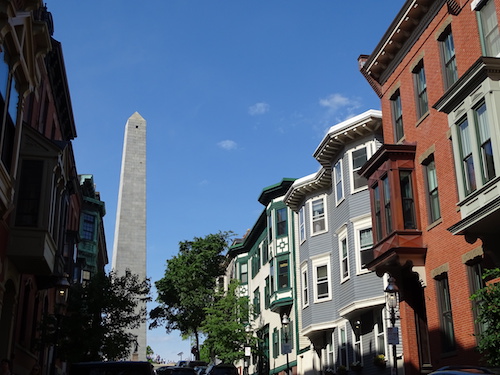
These 3 factors mentioned above are combining to steady the local housing economy. They will be the drivers of a strong economic recovery in Boston going forward. While we’re confident in the overall health and long-term viability of the real estate market, COVID will undoubtedly continue to cause short-term disruptions to the apartment rental market in Boston. We are going to keep providing data and real estate insights neighborhood by neighborhood, because all real estate is local in nature.
The increase in median home price reflected the perceived risks of renting an apartment during COVID. Demand shifted towards purchasing a home in 2020. The vacancy issues we saw in the closing months of last year coincided with a huge boom in real estate sales. The homeownership rate was already up year-over-year in Q3 of 2020 according to a report by NAR. We should see demand shift back towards renting in 2021. Inventory shortages should push up the median home price even further while rent prices will continue to drop in some of Boston’s most popular neighborhoods. Both Nature and Finance abhor a vacuum.
Renters will definitely find better deals in 2021 than in years past as a result of vacant inventory in many of the neighborhoods mentioned earlier. Prices are already down in some neighborhoods and we’ve seen landlords offering a variety of different concessions in order to fill empty inventory. As the vaccine is rolled out over the next few months, demand will be restored throughout Greater Boston. In the short-term, we will continue to see some renters scoring amazing deals on apartments in the core areas of Boston. We are not sure how long Greater Boston landlords will continue to pay broker fees, but it might make sense to strike while the iron is hot. Great deals never last forever.
The pandemic will continue to disrupt the cyclical nature of the Boston apartment rental market in 2021. Universities will continue to operate remotely for the most part throughout the 2020-2021 school year. Many landlords will be uncertain about renting patterns as we approach September 2021. Until landlords can rely on a sizable percentage of the student population returning to Boston, they will need to be more flexible with their lease agreements.
As a result, we will see more short-term leases as well as an increase in longer term leases being signed in 2021. There is going to be some disruption to the traditional 1 year standard fixed term lease as well as some displacement to the typical beginning and end lease dates that coincide with the fall semester. Perhaps leases being spread out over various months wouldn’t be the worst thing in the world. It might reduce some of the headaches with trash and traffic in Boston during the dreaded 9/1 move in marathon.
So, instead of seeing 60% of all apartment leases being signed on September 1, we may see that number reduce to 40-50% over the next two years. We’ll see a big shift back to summer rentals as a result this year, with more June 1-May 31, July 1-Jun 30, and August 1-July 31 leases being signed. Even if schools are open and fully operational in September of this year, it will likely be a couple of years before the 9/1 leasing cycle goes back to normal.
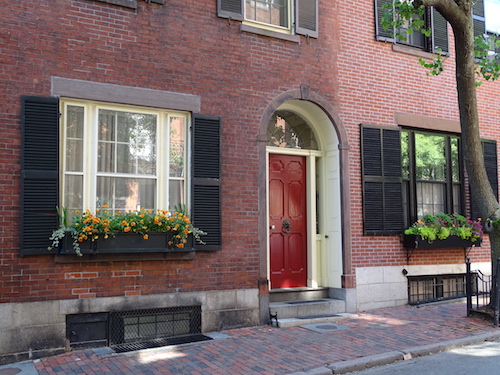
So, while there is definitely some serious concern in neighborhoods where vacancies have soared, there’s nothing that suggests these challenges are anything other than short-term obstacles related to COVID. In fact, there’s plenty more evidence to suggest that the regional economy is as strong as its ever been and there’s even more growth to come. The rental market will start its rebound in 2021, although the extent of that rebound will be dependent on how fast a vaccine is rolled out to the local population and how quickly schools and corporations scale down remote activities.
Put Our Data To Work For You
If you’re looking to rent a Greater Boston apartment in 2021, start your search on Boston Pads and put our real-time data to work for you. With so much changing in the local rental market, chances are you may score the best apartment ever. There is also a real possibility you could live in a neighborhood that you thought you could never afford. Get started with our Boston apartment search service today.
In 2021, landlords will have to pay attention to their assets to properly position themselves for the next few years. The apartment data experts at Boston Pads are delivering a state-of-the-art landlord portal providing key data points to help aid in renting. You’ll receive a real-time market report where you can compare your unit to other similar listings. You’ll even be able to calculate potential ROI on renovations and see where opportunities lie in your hyper local market. Click here to sign up for our Boston Property Owner Portal.
If you haven’t already, get started by listing your apartments on Boston Pads for free. Once our landlord portal is unveiled, you’ll be able to access it with your login.
The power of real-time apartment data has never been more relevant than in 2021. Boston Pads will continue to cover all these data points both at a regional level as well as a hyper local level in the months to follow. Stay tuned for more!

Demetrios Salpoglou
Published March 4, 2021
Demetrios has pulled together the largest apartment leasing team in the Greater Boston Area and is responsible for procuring more apartment rentals than anyone in New England – with over 130k people finding their housing through his services. Demetrios is an avid real estate developer, peak performance trainer, educator, guest lecturer and motivational speaker.


